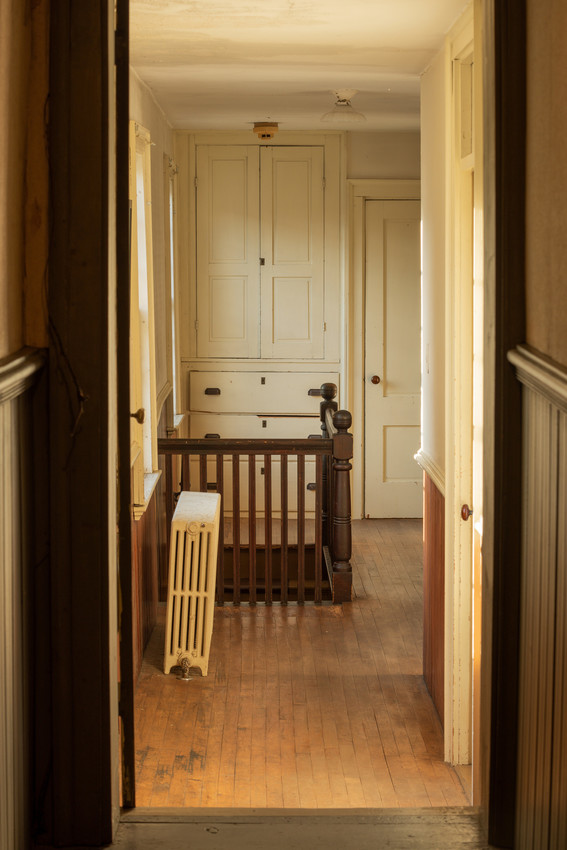 Sarah Orne Jewett House
Sarah Orne Jewett House
Staff Rooms

Two rooms allocated for the cook and the maid are on the right off this hallway. Each room had a fireplace and a window.
Sarah’s letters to family make fond mention of Katy Drinan’s good cooking, Hannah Driscoll’s singing, and Katy Galvin’s insightful words; there seems to have been a familial quality to the servant-family relationship in the Jewett home.
But in the late nineteenth and early twentieth century, staff quarters were about more than a homeowner’s warm feelings toward their servants. In an era when it was becoming increasingly difficult to retain domestic staff due to opportunities less arduous and offering greater freedom elsewhere, providing appealing servant quarters became important.
Homeowners consulted household manuals and articles on domestic service for advice on furnishing, decorating, and maintaining staff rooms to keep their servants content and to maintain household hygiene.
Household experts recommended rooms that were comfortable, easy to clean, and cheerful.
“The old habit of putting them anywhere to work, and in some close or dismal garret to sleep, has justly excited rebellion among these necessary, and now independent, members of our households.” – Henry Hudson Holly, Modern Dwellings in Town and Country Adapted to American Wants and Climate, 1878.